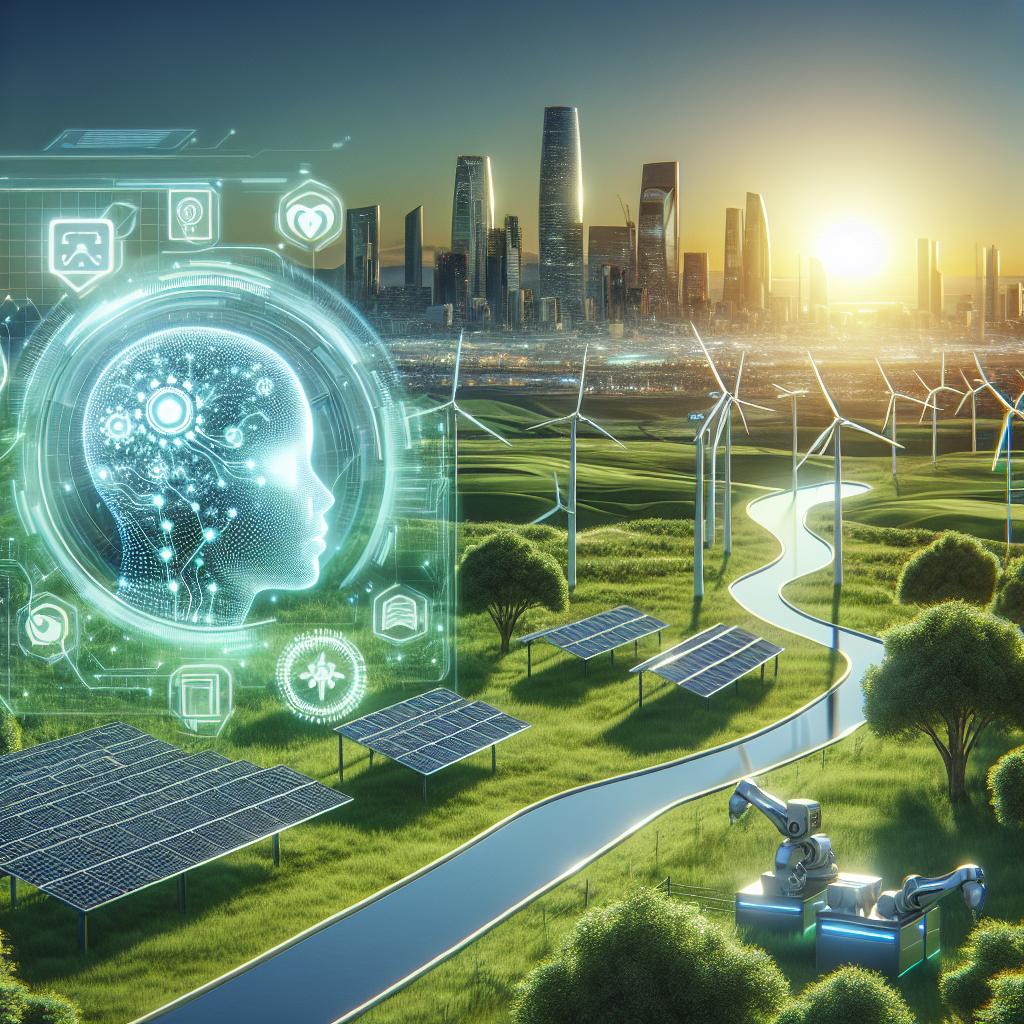In recent years, the world has seen a growing focus on renewable energy sources as a means to combat climate change and reduce our reliance on fossil fuels. With advancements in technology, artificial intelligence (AI) has emerged as a powerful tool to drive sustainable renewable energy development. AI-driven solutions have the potential to optimize the efficiency of renewable energy systems, improve grid stability, and accelerate the transition to a clean energy future.
AI and Renewable Energy: A Perfect Match
AI technologies, such as machine learning and predictive analytics, have the ability to analyze vast amounts of data in real-time, making them well-suited for optimizing renewable energy systems. By leveraging AI, renewable energy developers can improve the performance of solar panels, wind turbines, and other clean energy technologies. For example, AI algorithms can forecast weather patterns to optimize the operation of solar panels and wind turbines, maximizing energy generation and reducing costs.
Additionally, AI can facilitate the integration of renewable energy sources into the existing power grid. As renewable energy generation is intermittent, AI can help balance supply and demand by predicting energy production and consumption patterns. By optimizing the flow of electricity through the grid, AI can increase grid stability and reliability, enabling a higher penetration of renewable energy sources.
AI-driven solutions can also enhance the maintenance and monitoring of renewable energy systems. By analyzing data from sensors and IoT devices, AI algorithms can detect anomalies and predict equipment failures before they occur. This predictive maintenance approach can reduce downtime, extend the lifespan of renewable energy assets, and lower maintenance costs.
Furthermore, AI can support the development of innovative energy storage solutions, such as battery systems and pumped hydro storage. By optimizing the charging and discharging of energy storage systems, AI can enhance the efficiency of renewable energy integration and improve grid resilience.
Overall, AI-driven solutions have the potential to revolutionize the renewable energy sector, making clean energy more affordable, reliable, and accessible to a broader audience.
Case Studies: AI in Action
Several companies and organizations have already begun to harness the power of AI for sustainable renewable energy development. For example, Google’s DeepMind AI has been used to optimize the operation of wind farms in the United States. By analyzing historical data and weather forecasts, DeepMind’s algorithms were able to increase the energy output of wind turbines by up to 20%, leading to significant cost savings for the wind farm operators.
In another case, Enel Green Power, a leading renewable energy company, has deployed AI-driven solutions to optimize the performance of its solar plants. By using AI algorithms to predict solar irradiance and adjust the orientation of solar panels, Enel Green Power has been able to increase energy production and reduce operating costs.
Similarly, Tesla, the electric vehicle and clean energy company, has integrated AI into its energy storage products, such as the Powerwall and Powerpack. By using AI to optimize the charging and discharging of its battery systems, Tesla has been able to improve the efficiency of renewable energy integration and enhance grid stability.
These case studies demonstrate the potential of AI-driven solutions to transform the renewable energy sector and accelerate the transition to a sustainable energy future.
FAQs
Q: How can AI help increase the efficiency of renewable energy systems?
A: AI technologies, such as machine learning and predictive analytics, can analyze vast amounts of data to optimize the performance of renewable energy systems. By forecasting weather patterns, predicting energy production, and balancing supply and demand, AI can increase the efficiency of solar panels, wind turbines, and other clean energy technologies.
Q: How can AI improve grid stability and reliability?
A: AI algorithms can analyze data from sensors and IoT devices to predict equipment failures and detect anomalies in renewable energy systems. By optimizing the flow of electricity through the grid, AI can enhance grid stability and reliability, enabling a higher penetration of renewable energy sources.
Q: What are some real-world examples of AI-driven solutions in the renewable energy sector?
A: Companies like Google, Enel Green Power, and Tesla have deployed AI-driven solutions to optimize the operation of wind farms, solar plants, and energy storage systems. These examples demonstrate the potential of AI to increase energy output, reduce costs, and improve grid resilience in the renewable energy sector.
Q: How can AI support the development of innovative energy storage solutions?
A: By optimizing the charging and discharging of energy storage systems, AI can enhance the efficiency of renewable energy integration and improve grid resilience. Companies like Tesla have integrated AI into their battery products to optimize energy storage and support the transition to a clean energy future.
In conclusion, AI-driven solutions hold great promise for sustainable renewable energy development. By optimizing the efficiency of renewable energy systems, improving grid stability, and accelerating the transition to clean energy, AI can help combat climate change and pave the way for a more sustainable future. As companies and organizations continue to invest in AI technologies, we can expect to see even greater advancements in the renewable energy sector in the years to come.

